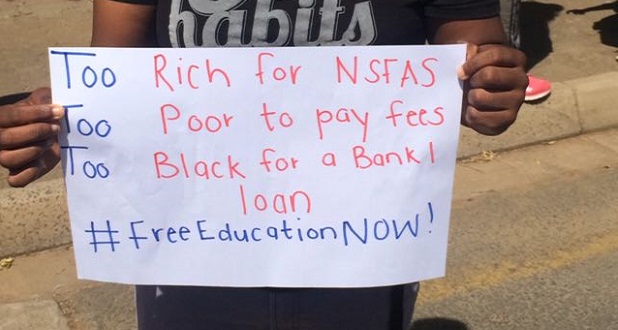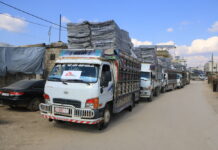On Monday, the ministerial task team presented the Ikusasa Student Financial Aid Programme (ISFAP) at the Fees Commission in Centurion.
The ministerial task team was put together by government in October 2015 to address the crises in higher education funding. The Daily Vox spoke to Sizwe Nxasana, the current chairperson of National Student Financial Aid Scheme (NSFAS), who headed the task team. ISFAP is the ministry’s answer to dissatisfaction with NSFAS and is meant to replace the model come 2018… if the Fees Commission doesn’t come through with free education, of course.
So let’s look into what the the new model has to offer.
Who will benefit from ISFAP?
ISFAP is meant to address the need to adequately fund and support poor and “missing middle†university and Technical and Vocational Education and Training (TVET) students. ISFAP will only be available to students whose household income is R600, 000 or less annually.
The poorest of students, those on social grants for instance, will be fully subsidised for the duration of their studies, while less poor and missing middle students will receive grants and loans depending on their household incomes.
“So there would be no cap, and the full cost of study would cover registration, tuition, books, accommodation, meals and even a stipend. Then as household income increases, you then start introducing grants and loans,†Nxasana told the Daily Vox.
But there’s also a system in place that gives priority funding towards students in their earlier years of study.
“In other words, at the first year of study, if you come from a category that’s been means tested as poor or missing middle, your first and second year may be full grants, and then your third year may be a combination of grants and loans,†said Nxasana.
While being open to all students, ISFAP will attempt to “focus†on funding students studying in the STEM (science, technology, engineering and mathematics) disciplines. It remains to be seen whether this focus will disadvantage students looking to go into the social sciences, arts or commerce, though.
How will ISFAP determine who are poor and missing middle students?
The process of determining this is called “means testingâ€.
“We’re recommending to build a platform where when a student applies for funding, they submit their ID number and their parent or guardian’s ID number. That information then goes into a system which checks the household income against various sources simultaneously,†said Nxasana. The sources are:
- The Department of Basic Education to determine what kind of school the student attended;
- The South African Social Security Agency (SASSA) to see whether a student’s household relies on social grants;
- The Department of Home Affairs to verify the identities of those listed;
- The South African Revenue Services (SARS) to verify the income levels that have been declared by students or their parents or guardians; and
- The IDX, which is a common database that is used by banks to determine affordability and means testing.
Will ISFAP only provide funding for studies?
ISFAP intends to provide structures and benefits to students to ensure that they are adequately supported in order to succeed. This would include additional academic support, psycho-social support and medical support for students who are unable to afford medical care when they are sick or injured.
“If you go to some of the better-resourced universities, they have student support programmes, education development units and those kind of things. But if go to the historically black universities, you won’t find a lot of that support. So in addition to what government is already allocating for development at those universities, we are seeking to raise a significant amount of money so that all students that are funded get this wrap-around support,†said Nxasana.
Where’s the money for all of this coming from?
Nxasana said that NSFAS has calculated that they’d need R45 to R50 billion to fund poor and missing middle students. Of this, R16 to R17 billion will come from government following the midterm budget announcement of Finance Minister Pravin Gordhan in October.
The rest of it will come from a number of public/private partnerships. More specifically from “government education and training departments; non-profit organisations; development finance institutions; foundations, local and international donors and the private sector; individuals; and retirement funds as well as social impact bondsâ€.
The biggest contribution to this, according to Nxasana, might come from a recommendation they’ve made to the Department of Trade and Industry (DTI) to amend the Black Economic Empowerment (BBBEE) Act to have companies, voluntarily, pay or contribute 1.5% of their payrolls towards funding poor students. Nxasana estimates that this could contribute R8 to R15 billion to ISFAP.
When will it be rolled out?
According to the Department of Higher Education and Training, a pilot project will run in 2017 and use R200 million for about 2, 000 students studying towards “scarce skills professionsâ€. So disciplines like medicine, pharmacology, actuarial sciences, engineering, artisan courses and some in the humanities. Students funded will be supported until the end of their programmes.
The pilot project, however, will only available to missing middle students for now – NSFAS will continue to used in its current form for poor students. If the ISFAP pilot is successful then it will be formally implemented in 2018.
A presentation on ISFAP can be found here.









